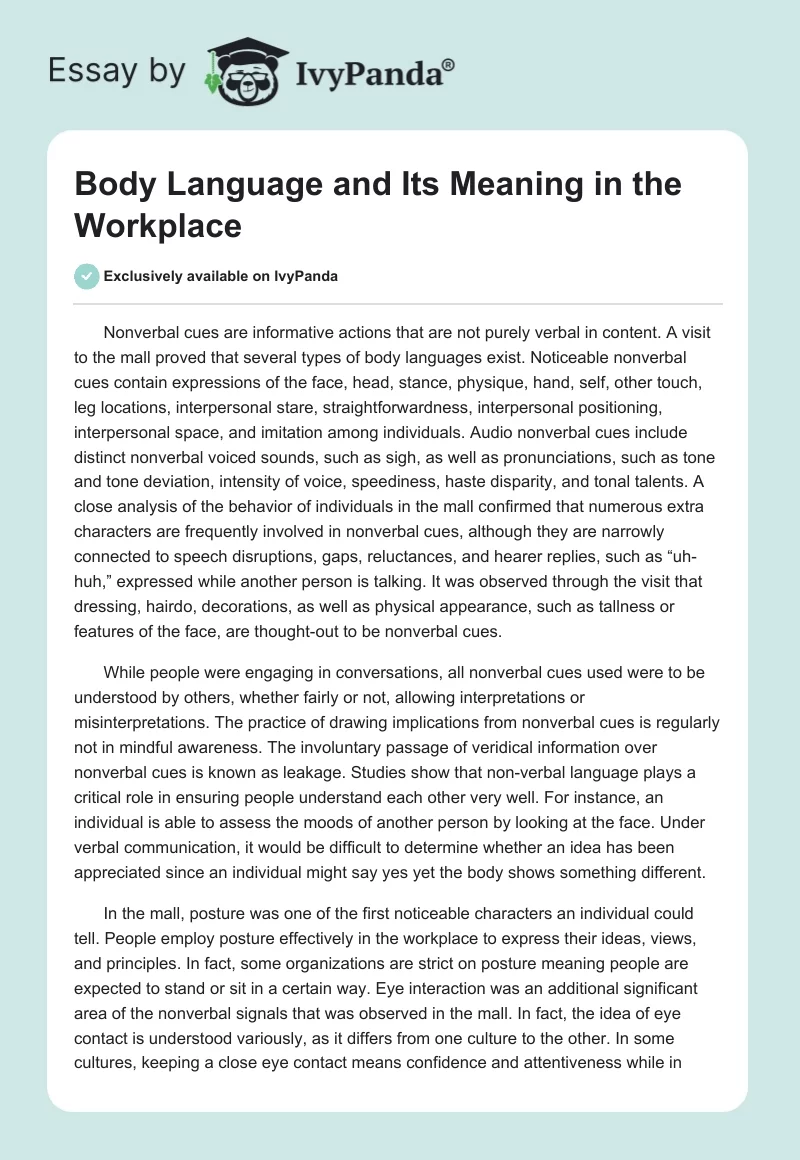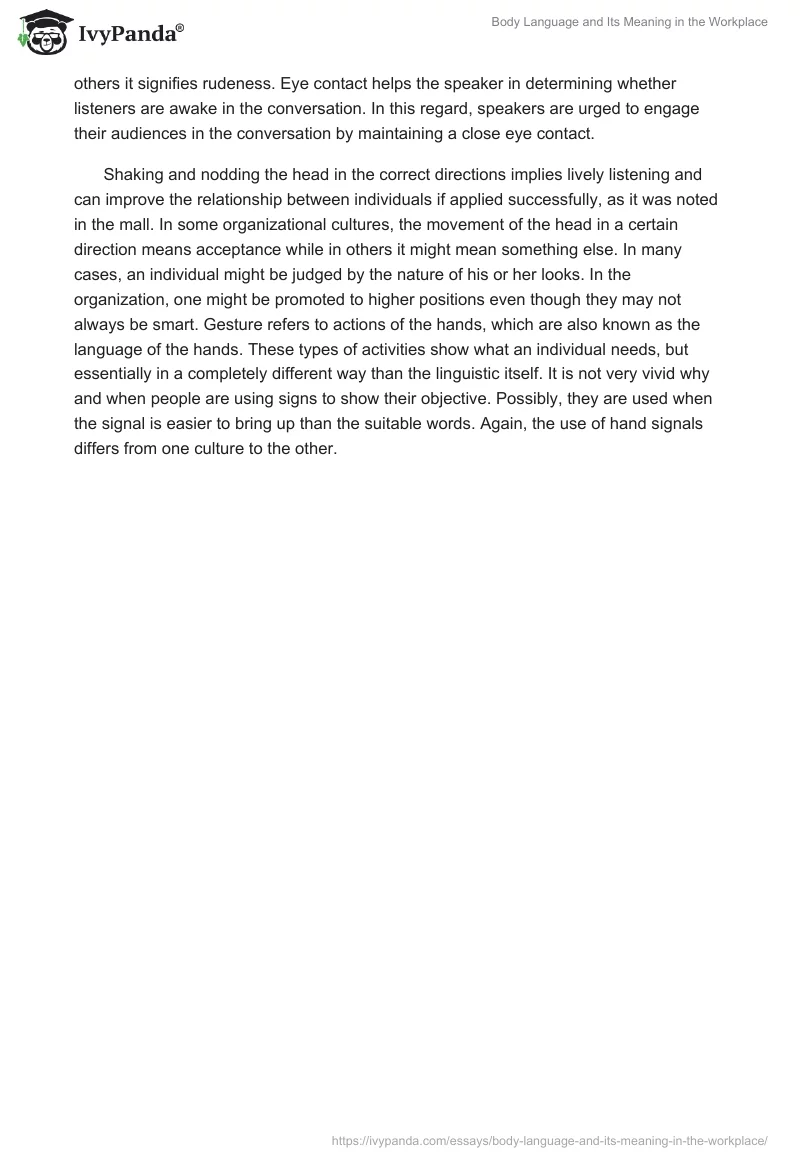Nonverbal cues are informative actions that are not purely verbal in content. A visit to the mall proved that several types of body languages exist. Noticeable nonverbal cues contain expressions of the face, head, stance, physique, hand, self, other touch, leg locations, interpersonal stare, straightforwardness, interpersonal positioning, interpersonal space, and imitation among individuals. Audio nonverbal cues include distinct nonverbal voiced sounds, such as sigh, as well as pronunciations, such as tone and tone deviation, intensity of voice, speediness, haste disparity, and tonal talents. A close analysis of the behavior of individuals in the mall confirmed that numerous extra characters are frequently involved in nonverbal cues, although they are narrowly connected to speech disruptions, gaps, reluctances, and hearer replies, such as “uh-huh,” expressed while another person is talking. It was observed through the visit that dressing, hairdo, decorations, as well as physical appearance, such as tallness or features of the face, are thought-out to be nonverbal cues.
While people were engaging in conversations, all nonverbal cues used were to be understood by others, whether fairly or not, allowing interpretations or misinterpretations. The practice of drawing implications from nonverbal cues is regularly not in mindful awareness. The involuntary passage of veridical information over nonverbal cues is known as leakage. Studies show that non-verbal language plays a critical role in ensuring people understand each other very well. For instance, an individual is able to assess the moods of another person by looking at the face. Under verbal communication, it would be difficult to determine whether an idea has been appreciated since an individual might say yes yet the body shows something different.
In the mall, posture was one of the first noticeable characters an individual could tell. People employ posture effectively in the workplace to express their ideas, views, and principles. In fact, some organizations are strict on posture meaning people are expected to stand or sit in a certain way. Eye interaction was an additional significant area of the nonverbal signals that was observed in the mall. In fact, the idea of eye contact is understood variously, as it differs from one culture to the other. In some cultures, keeping a close eye contact means confidence and attentiveness while in others it signifies rudeness. Eye contact helps the speaker in determining whether listeners are awake in the conversation. In this regard, speakers are urged to engage their audiences in the conversation by maintaining a close eye contact.
Shaking and nodding the head in the correct directions implies lively listening and can improve the relationship between individuals if applied successfully, as it was noted in the mall. In some organizational cultures, the movement of the head in a certain direction means acceptance while in others it might mean something else. In many cases, an individual might be judged by the nature of his or her looks. In the organization, one might be promoted to higher positions even though they may not always be smart. Gesture refers to actions of the hands, which are also known as the language of the hands. These types of activities show what an individual needs, but essentially in a completely different way than the linguistic itself. It is not very vivid why and when people are using signs to show their objective. Possibly, they are used when the signal is easier to bring up than the suitable words. Again, the use of hand signals differs from one culture to the other.


